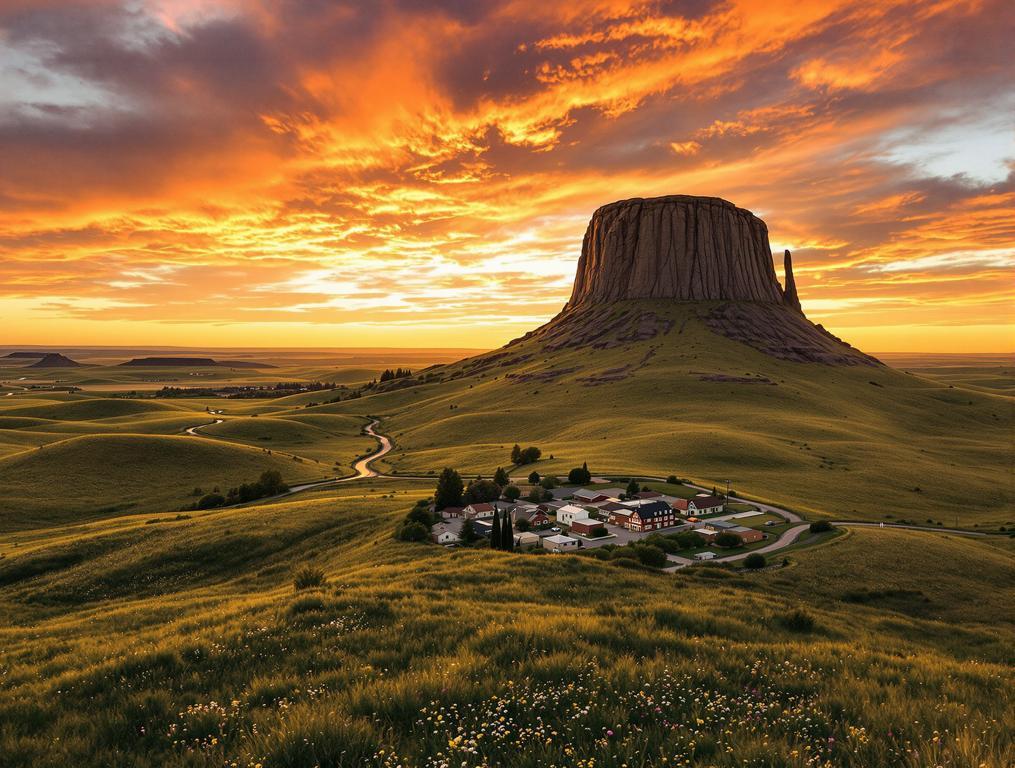I’ve just arrived in Sentinel Butte, North Dakota, population 64. Standing at the base of its namesake geological formation, I’m witnessing something statisticians would call impossible: a micro-town that’s actually growing. While rural America shrinks at alarming rates, this tiny speck on the map has achieved a 4.92% population increase since 2020. The mathematical anomaly feels tangible in the summer air as I gaze across Golden Valley County, about 20 miles east of Theodore Roosevelt National Park and 140 miles west of Bismarck.
America’s Fastest-Growing Micro-Town Defies Rural Decline With 4.92% Growth
Small-town America is vanishing before our eyes. Since 2010, rural communities across the heartland have experienced an average 6.7% population decline. The narrative has become predictable—young people leave, businesses close, towns wither.
But Sentinel Butte refuses to follow this script. According to World Population Review data, this community has grown from 61 residents in 2020 to 64 in 2025, bucking every rural demographic trend.
Unlike North Dakota’s transformed oil towns further north, Sentinel Butte’s growth appears organic rather than resource-driven. There’s no oil boom here—just a quiet renaissance that demographers hadn’t predicted.
“Sometimes the numbers tell one story while the land tells another,” explains a local rancher who’s lived here for three generations. “People are rediscovering what makes small places valuable—silence, community, room to breathe.”
How 64 Residents Are Reversing the “Dying Small Town” Narrative
What makes this statistical anomaly even more remarkable is the backdrop. The town occupies just 1.03 square miles of prairie, with the dramatic geological sentinel standing watch nearby. The butte itself rises to North Dakota’s second-highest elevation point, accessible via a county-maintained road.
While some tiny Midwest towns built identities on geographical claims, Sentinel Butte’s namesake formation is genuinely significant. The geological feature served as a navigation point for Theodore Roosevelt during his ranching days and was named after two Arikara sentinels killed here in 1864.
Today’s residents honor this heritage through preservation rather than commercialization. Unlike nearby Medora, which welcomes 700,000+ annual visitors with its musical productions and Roosevelt connections, Sentinel Butte remains authentically small.
The first thing you notice is what’s missing—no gift shops, no crowds, no manufactured experiences. Just the prairie, the butte, and people who actually live here. It feels like discovering a secret pocket of America that time forgot.
This unpolished authenticity may be precisely what’s driving Sentinel Butte’s modest but meaningful growth. As remote work reshapes migration patterns, places offering genuine rural character without sacrificing accessibility become increasingly attractive.
Summer 2025: The Perfect Window to Experience This American Anomaly
My timing couldn’t be better for experiencing this demographic outlier. June through August brings mild temperatures averaging 75-85°F and prairie wildflowers painting the landscape in bursts of color.
Access is straightforward via Highway 10, with free parking throughout town. Visit the geological butte by driving the county-maintained road to its summit for panoramic views spanning 30+ miles on clear days.
Early mornings offer the best photography of the butte, when golden light washes over the prairie and migratory birds are most active. Like other iconic tiny American towns with distinctive offerings, Sentinel Butte combines natural wonder with authentic rural charm.
For geology enthusiasts, the area reveals Paleocene fossils from 60 million years ago. Local residents suggest focusing on the western areas for hunting moss agates, semi-precious stones with unique dendritic patterns.
As I watch the summer sun dip toward the horizon from the butte’s half-acre summit plateau, I’m struck by the rarity of what I’m witnessing. This isn’t just another small town—it’s a mathematical unicorn, growing when thousands of its peers are shrinking.
Sentinel Butte might follow the path of other Western towns that preserve authenticity rather than commercializing, maintaining its character while embracing selective growth. Like a swimmer moving against the current, this tiny community is defying America’s rural exodus one resident at a time.
When rural statisticians look back at the 2020s, places like Sentinel Butte may well be recognized as the canaries in the coal mine—early indicators of a micro-town revival that nobody saw coming. The future of rural America might just be written by 64 North Dakotans who decided their tiny town was worth saving.
